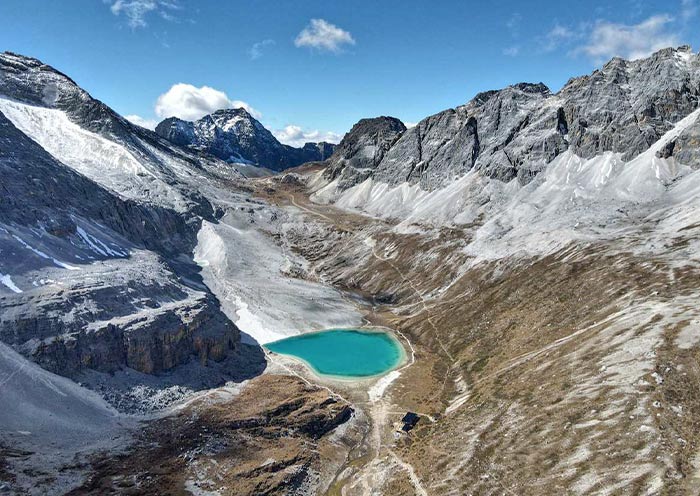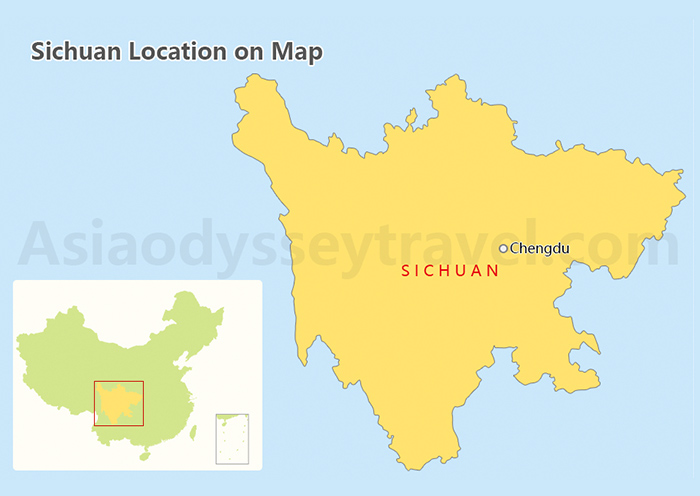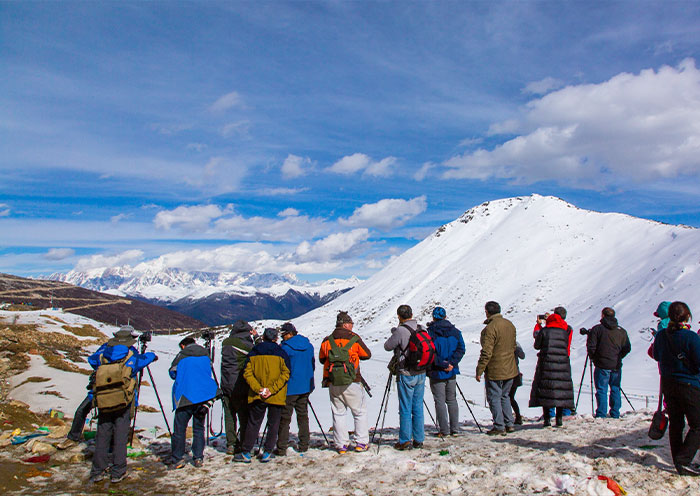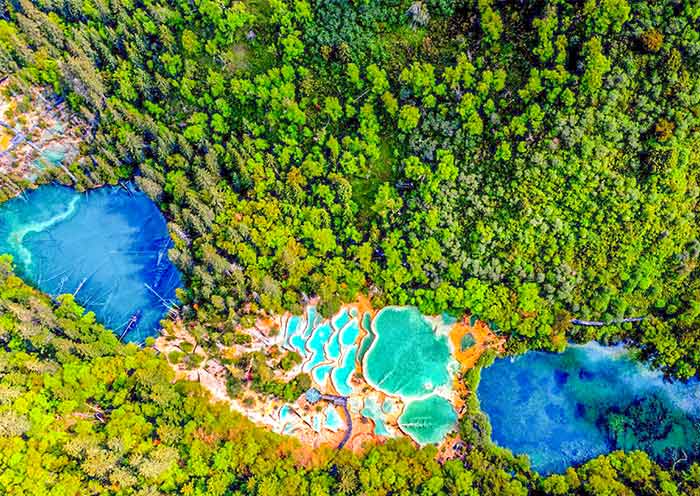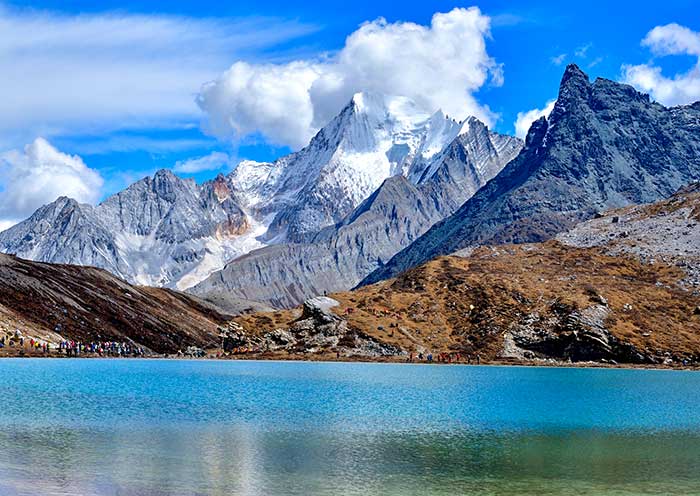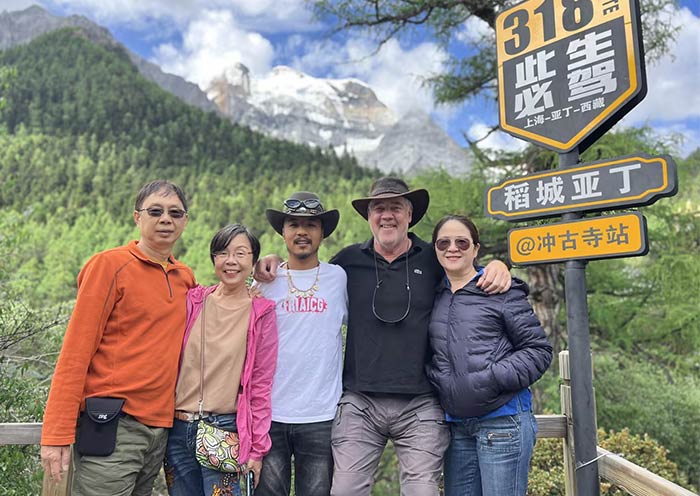Sichuan Tibet Highway G318 & G317: Facts & Overview
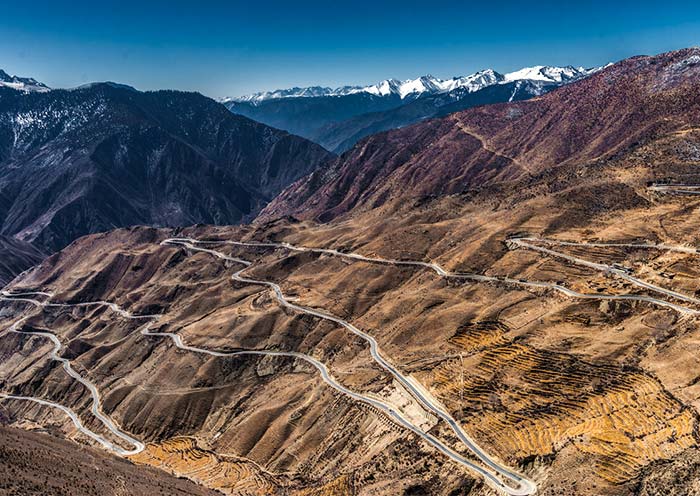
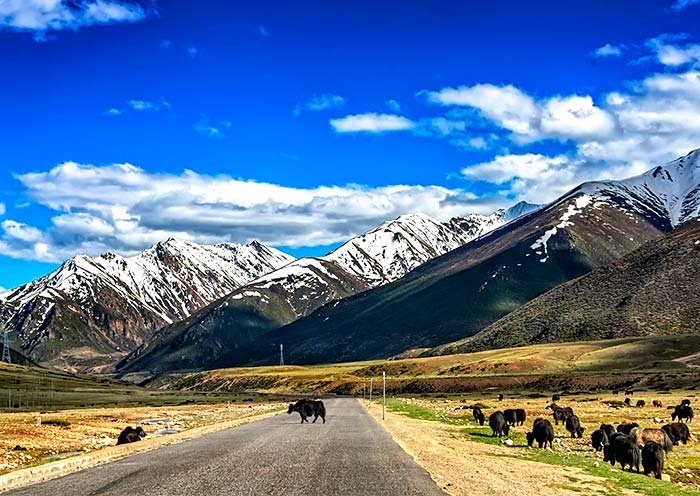
The Sichuan-Tibet Highway is a network of roads that primarily consists of two main routes: G318 (Sichuan-Tibet Southern Route) and G317 (Sichuan-Tibet Northern Route). Here is an overview and some key facts about these highways:
| Southern Route (G318) | Northern Route (G317) | |
|---|---|---|
| Route | Chengdu - Kangding - Lithang - Markam - Zogang - Nyingchi - Lhasa | Chengdu - Danba - Luhuo - Dege - Chamdo - Nagqu - Lhasa |
| Length | 2,142 kilometers (1,331 miles) | 2,200 kilometers (1,367 miles) |
| Average Altitude | 2000 - 3500 meters | 2000 - 4000 meters |
| Duration | 7-10 days | 8-11 days |
| Road Condition | From well-paved highways to narrow and winding mountain roads. | Mostly paved roads with some sections under construction |
| Landscape Type | Snow-capped mountains, valleys, grasslands, glaciers, forests, alpine meadows | Mountainous terrain, valleys, rivers |
| Outdoor Activities | Hiking, trekking, camping, photography | Hiking, trekking, camping, photography |
| Recommended Month | October to November | June to September |
Both routes of the Sichuan Tibet Highway offer breathtaking scenery, but they also pose challenges due to high altitudes, remote locations, and variable road conditions. It is crucial to plan your trip well in advance, consider acclimatization, and ensure you have the required permits and necessary preparations for a safe and enjoyable journey.
Sichuan Tibet Highway Map
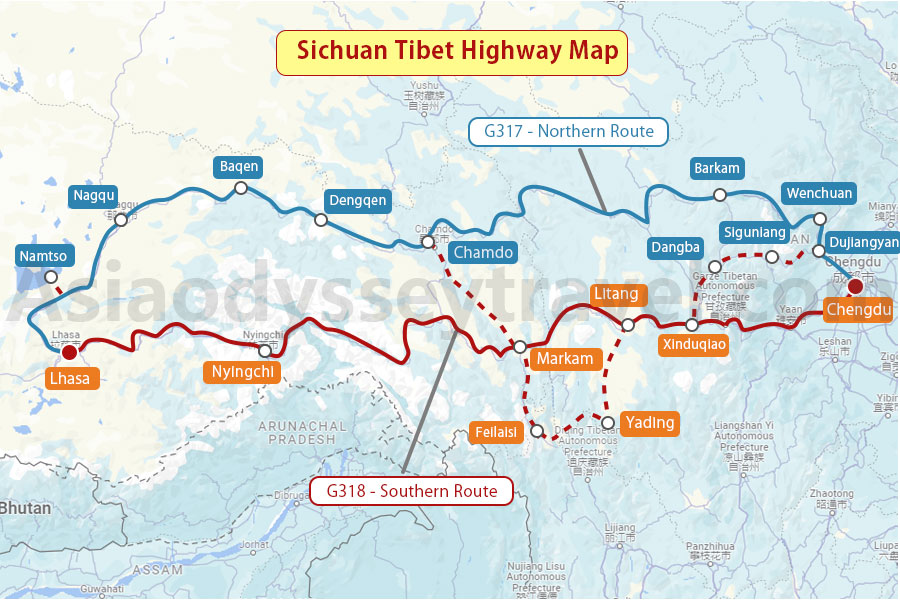
Sichuan Tibet Highway Southern Route - G318 - Unparalleled Natural Beauty
The Sichuan-Tibet Southern Route, also known as G318, is a popular and scenic highway that connects Chengdu to Lhasa. It covers a vast distance and offers unparalleled natural beauty along the way. The journey from Chengdu to Lhasa on the Sichuan-Tibet Southern Route is known for its breathtaking landscapes, Tibetan cultural experiences, and the gradual ascent into the high-altitude regions of Tibet.
Sichuan Tibet Highway Southern Route Highlights
- Rich Natural Landscapes: This route traverses through diverse natural landscapes, including snow-capped mountains, glaciers, grasslands, lakes, and forests, earning its reputation as the most beautiful scenic road.
- Snow-capped mountains: Mount Gongga in Sichuan, Mount Namjagbarwa in Tibet, and the sacred Three Holy Mountains of Yading in Sichuan
- Lakes: Sister Lakes in Batang, Ranwu Lake in Chamdo, Basong Co Lake in Nyingchi
- Glaciers: Hailuogou Glacier in Ganze, Midui Glacier in Bomi, and Laigu Glacier in Chamdo
- Grasslands: Tagong Grassland and Maoya Grassland in Ganze
- Forests: Lulang Forest Sea in Nyingchi
- Ethnic Diversity: Embarking on the southern route allows you to discover the unique charm of various ethnic groups. While the Tibetan culture is predominant along the route, you'll also encounter the fascinating Naxi ethnic group, particularly in the Yading area.
- Numerous Branches: There are multiple side routes that lead to renowned attractions like Daocheng Yading and Tagong Grassland, providing ample choices for your itinerary.
- Linkage with the Yunnan-Tibet Highway: The southern route, G318, offers a remarkable opportunity to connect with the Yunnan-Tibet Highway, combining two classic routes and expanding your journey.
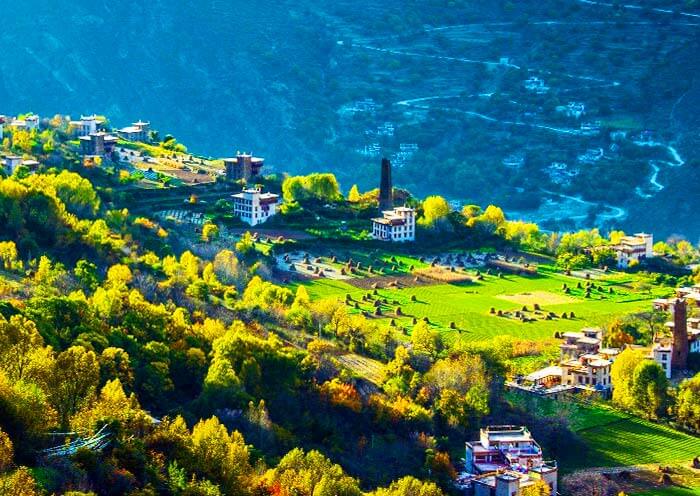
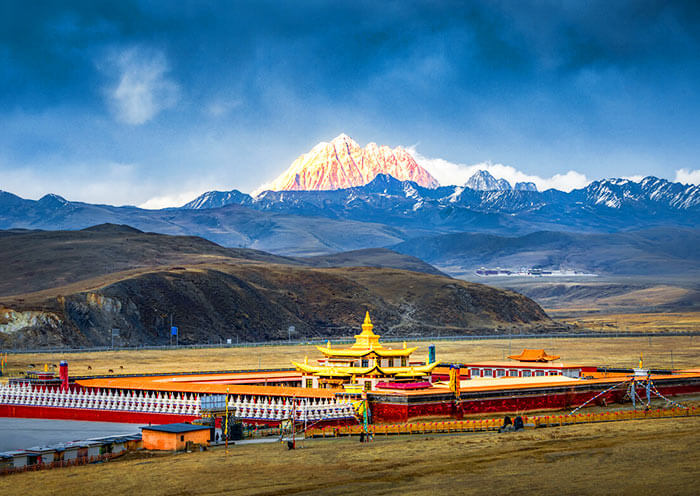
Must-See Attractions & Destinations in Sichuan Tibet Highway Southern Route
- Xinduqiao: Step into the ancient town of Xinduqiao, where time seems to stand still. This charming town showcases traditional Tibetan architectural styles, with whitewashed houses, prayer flags fluttering in the wind, and a tranquil atmosphere. The picturesque surroundings make it a haven for photographers and nature enthusiasts.
- Tagong Grassland: Immerse yourself in the vast expanse of Tagong Grassland, where rolling green plains stretch as far as the eye can see. This stunning natural landscape offers panoramic views of snow-capped mountains, grazing yaks, and the nomadic way of life. Experience the unique culture and traditions of the local herdsmen as you explore this enchanting grassland.
- Litang: Nestled at the border of Sichuan and Tibet, Litang is a beautiful small town known for its rich Tibetan heritage. It serves as an ideal starting point to explore Tibetan culture, with its monasteries, prayer flags, and traditional Tibetan houses. The Litang Horse Racing Festival, held annually in August, showcases the vibrant Tibetan equestrian culture and is a must-see event.
- Daocheng Yading: Referred to as the "Shangri-La in Dreams," Daocheng Yading is a paradise of natural beauty. Marvel at the majestic mountains, including the sacred Three Holy Mountains, adorned with snow-capped peaks, deep valleys, and pristine lakes. The stunning scenery, fresh alpine air, and serene atmosphere make it a true gem of the southern route.
- Nujiang Seventy-Two Turns: Brace yourself for an exhilarating experience as you navigate the Nujiang Seventy-Two Turns. This winding mountain road takes you on a thrilling journey through a deep gorge, offering awe-inspiring views of the rushing river below and the towering cliffs above. The hairpin bends and steep slopes make it a memorable and adrenaline-pumping part of the route.
- Ranwu Lake: Discover tranquility at Ranwu Lake, a picture-perfect lake surrounded by majestic mountains. The crystal-clear waters mirror the surrounding peaks, creating a serene and idyllic atmosphere. Take a leisurely stroll along the lakeside, enjoy a picnic, or simply immerse yourself in the beauty of nature.
- Lulang Forest: Step into the enchanting realm of Lulang Forest, also known as Lulang Forest Sea. This primeval forest captivates with its dense foliage, colorful flowers, and towering trees. The ethereal beauty of the forest, especially during autumn when the leaves turn vibrant shades of red and gold, creates a magical and fairy-tale-like ambiance.
- Basong Co Lake: Indulge in the breathtaking scenery of Basong Co Lake, a high-altitude lake embraced by snow-capped mountains. The crystal-clear waters reflect the surrounding peaks, creating a mesmerizing and awe-inspiring landscape. Enjoy the peaceful atmosphere, take a boat ride, or simply soak in the natural beauty that surrounds you.
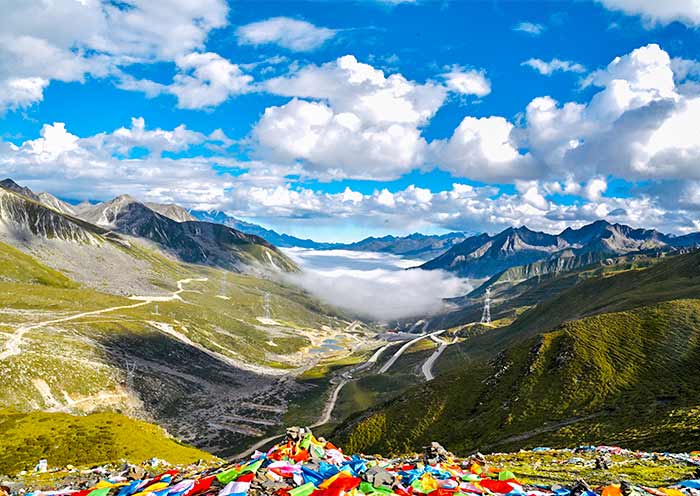
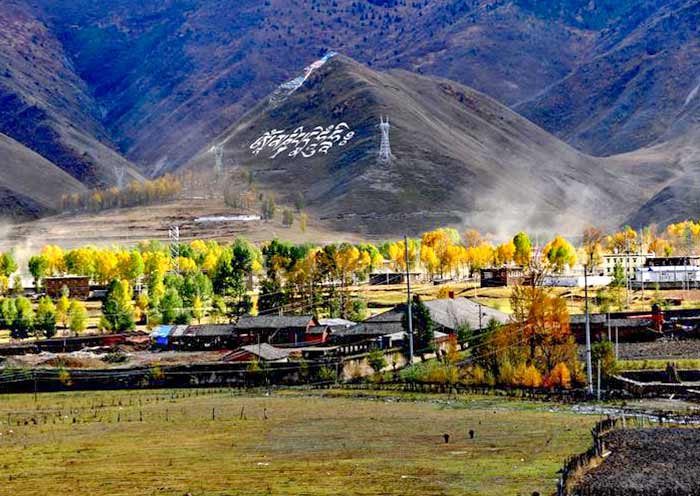
Best Time to Travel through Sichuan Tibet Highway Southern Route
Autumn, especially the middle and late October, is the best time to visit, avoiding the National Day Golden Week when tourist numbers are high. During this season, the natural landscapes showcase their most vibrant colors, with pleasant weather characterized by mild temperatures, clear skies, and minimal rainfall.
Recommended Travel Length & Itinerary
The Sichuan Tibet Highway Southern Route from Chengdu to Lhasa covers a distance of over 2,000 kilometers. Apart from the 280-kilometer stretch from Chengdu to Kangding and the 400-kilometer highway from Nyingchi to Lhasa, the remaining sections are national roads with strict speed limits due to frequent traversals of gorges and cliffside routes. Typically, it takes 7-10 days to travel the Southern Route from Chengdu to Lhasa. The conventional itinerary includes a visit to Daocheng Yading, with the difference being whether or not to proceed to the Yunnan-Tibet Highway after exploring Yading.
Option 1: Southern Route + Daocheng Yading Nature Rserve
Day 1: Depart from Chengdu and head to Xinduqiao/Yajiang.
Day 2-4: Journey from Yajiang to Yading for a 2-day tour of the stunning Yading Nature Reserve.
Day 5: Return to Litang and continue your G318 way to Batang after leaving Yading.
Day 6: Continue the journey from Batang to Markam and Zogang.
Day 7-10: Depart from Zogang and visit Ranwu Lake, Bome, Nyingchi, and finally, arrive in Lhasa.
Option 2: Southern Route + Yunnan-Tibet Highway
Day 1: Depart from Chengdu and head to Xinduqiao/Yajiang.
Day 2-4: Journey from Yajiang to Yading for a 2-day tour of Yading Nature Reserve, then proceed to Xiangcheng.
Day 5: Explore Xiangcheng County, Zhongde Village, Jinsha Bend, Deqin, and Feilai Temple in Yunnan.
Day 6: Continue the journey from Feilai Temple in Yunnan to Yanjing Scenic Area and reach Markam County in Tibet.
Day 7-11: Depart from Markam and head to Zogang, Ranwu Lake, Bome, Nyingchi, and finally, arrive in Lhasa.
These itineraries cover the highlights of the Southern Route and offer different options for exploring the region, including the renowned Daocheng Yading Nature Reserve or the Yunnan-Tibet Highway. Each day presents unique landscapes and cultural experiences, allowing you to immerse yourself in the beauty of the Tibetan plateau and its surroundings.
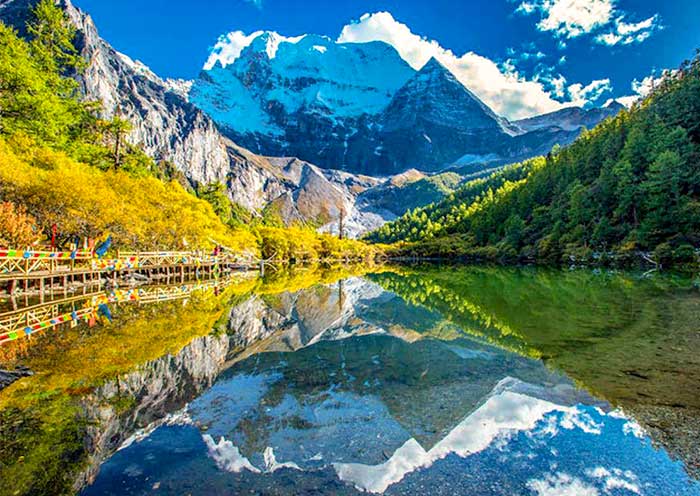
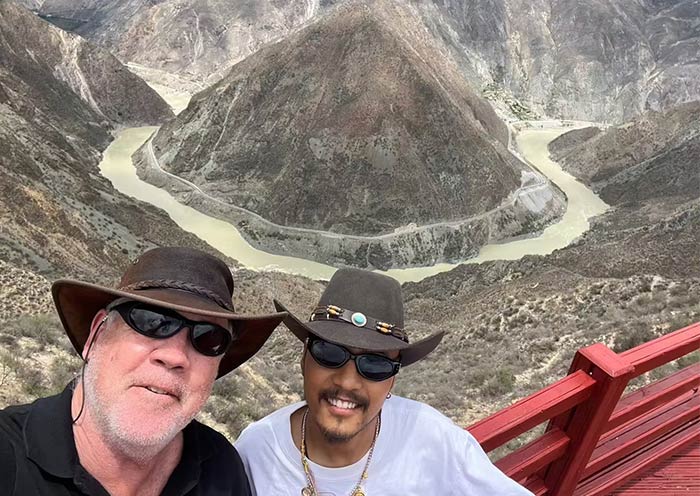
Accommodation Options Along Sichuan Tibet Highway Southern Route
Along the G318 route, there are several counties and towns that offer standard accommodation options for foreign visitors. Please note that as a foreign visitor, it is generally recommended to stay in qualified foreign-related hotels in China for a comfortable and hassle-free experience. Here are some notable places along the G318 where you can find suitable accommodation:
- Kangding City: Kangding serves as a gateway to the Tibetan plateau. It offers a range of accommodation options, including hotels that cater to foreign visitors.
- Yajiang County: Yajiang County is located between Kangding and Litang. While the choices may be more limited compared to larger cities, you can still find comfortable hotels that cater to foreign visitors.
- Xinduqiao Town: Xinduqiao is a picturesque town known for its stunning landscapes and traditional Tibetan architecture. It offers a few hotels and guesthouses that provide accommodation for tourists.
- Litang County: Litang is a significant stop along the G318 route, located at the border of Sichuan and Tibet. This town offers a range of accommodation options, including hotels that cater to foreign visitors.
- Markam County: Markam County is located in the eastern part of Tibet. While the choices may be more limited compared to larger cities, you can still find guesthouses or hotels that cater to the needs of foreign visitors.
- Baxoi County: Baxoi County is a scenic area situated in eastern Tibet. It offers several accommodation options, including guesthouses and hotels that cater to tourists.
- Bome County: Bome County, known for its lush forests and stunning landscapes, offers accommodation options for visitors. While the choices may be limited, you can find guesthouses or hotels that provide basic amenities for a comfortable stay.
- Nyingchi City: Nyingchi City, located in southeastern Tibet, is known for its breathtaking scenery, including forests, rivers, and snow-capped mountains. As a relatively larger city, Nyingchi offers a range of accommodation options, including hotels that cater to foreign visitors. You can find comfortable lodging to explore the natural wonders of the area.
While traveling along the G318 route, it is advisable to plan your accommodation in advance and make reservations to ensure availability, especially during peak tourist seasons.
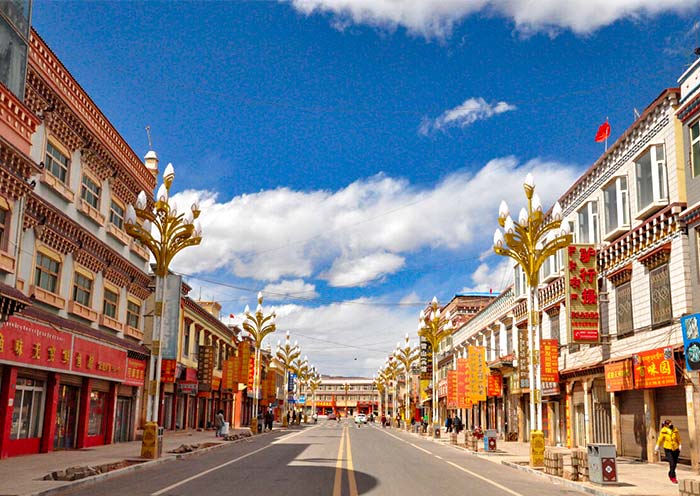
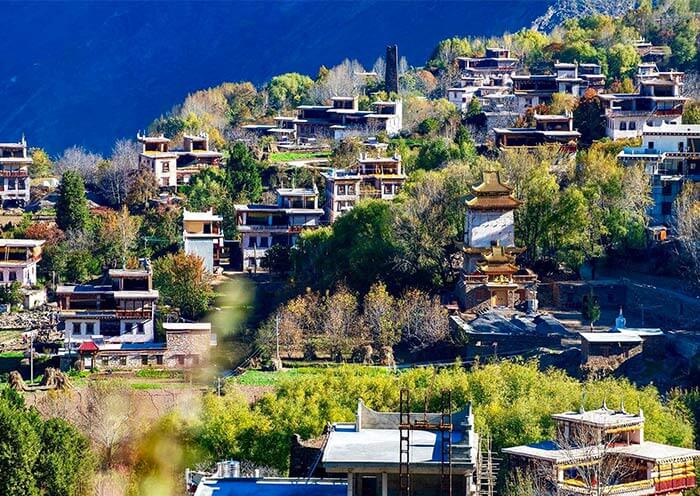
Sichuan Tibet Highway Northern Route - G317 - Tibetan Cultural Feast
The Sichuan-Tibet Northern Route, also known as G317, is an alternative highway that connects Chengdu and Lhasa. The Sichuan-Tibet Northern Route (G317) offers a different perspective and landscapes compared to the Southern Route. It takes you through picturesque Tibetan towns, remote grasslands, and scenic mountain areas, providing an opportunity to immerse yourself in Tibetan culture and experience the natural beauty of the region.
Highlights
- Tibetan culture and heritage: The route is dotted with Tibetan villages, monasteries, and towns, allowing you to immerse yourself in the rich Tibetan culture and witness the daily lives of the locals. You'll have opportunities to visit ancient monasteries, experience Tibetan rituals and festivals, and interact with friendly Tibetan people.
- Natural Landscapes: The route primarily showcases high mountain meadows, snow-capped peaks, and other breathtaking natural landscapes. You'll be surrounded by majestic mountains, vast grasslands, and pristine wilderness, offering a truly awe-inspiring experience.
- Remote and Expansive: The northern route is sparsely populated, providing a sense of vastness and grandeur. As you venture along the highway, you'll immerse yourself in the untouched beauty of the Tibetan plateau, making it an adventurous journey for those seeking unique and off-the-beaten-path experiences.
- Panda Habitat: The route passes through or near the habitat of the giant pandas. This presents an opportunity to visit panda conservation centers or explore areas known for their panda populations, allowing you to witness these adorable creatures in their natural environment.
The Sichuan Tibet Highway Northern Route offers a remarkable combination of cultural immersion, stunning natural landscapes, and a sense of adventure. With its rich historical sites, breathtaking scenery, remote expanses, and the possibility of encountering giant pandas, it promises an unforgettable Tibetan cultural feast.
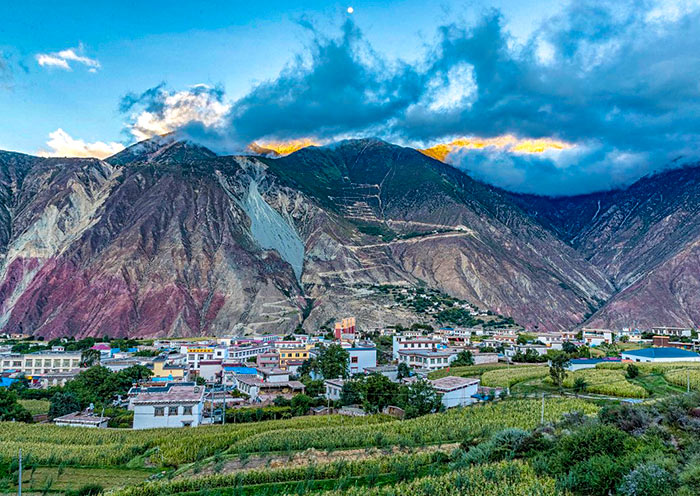
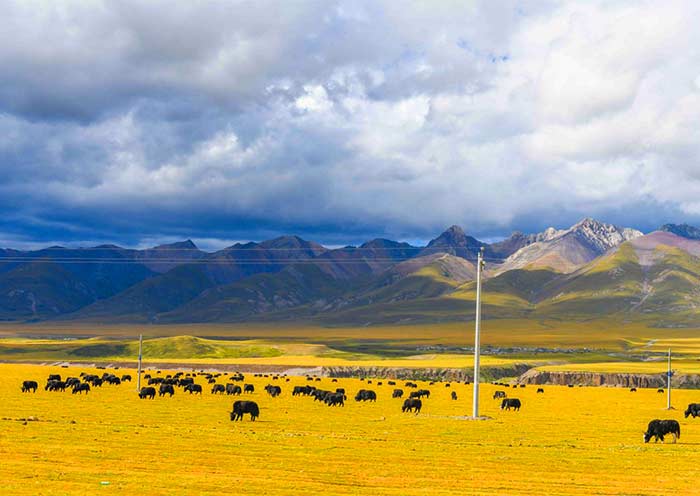
Must-See Attractions & Destinations
- Wolong Panda Base: Located near the town of Wolong, the Wolong Panda Base is a renowned panda conservation and research center. It offers visitors the opportunity to observe and learn about giant pandas in a natural habitat-like setting. You can see these adorable creatures up close and also learn about their conservation efforts.
- Mt Siguniang (Four Sisters Mountain): Mt Siguniang is a stunning mountain range with four peaks, known as the "Four Sisters." The Changping Valley and Shuangqiao Valley are the main scenic areas of Mt Siguniang. They offer breathtaking landscapes, including snow-capped peaks, alpine meadows, and crystal-clear lakes. Hiking, trekking, and photography are popular activities in this area.
- Danba Tibetan Village: Danba is famous for its Tibetan-style watchtowers and picturesque villages. The Tibetan villages in Danba are known for their unique architecture and cultural heritage. You can explore the ancient watchtowers, visit local Tibetan families, and experience the traditional Tibetan way of life.
- Moshi Stone Park: Located in the Ganzi Tibetan Autonomous Prefecture, Moshi Stone Park is a geological wonderland. It features unique rock formations, eroded by wind and water over millions of years, creating a surreal landscape. The park offers hiking trails and viewpoints, allowing visitors to appreciate the extraordinary natural beauty.
- Dege Parkhang Printing House: Dege Parkhang Printing House, also known as the Dege Sutra Printing House, is an ancient Tibetan printing house that has been operating since the 18th century. The printing house is renowned for its production of Tibetan Buddhist scriptures, including the Kangyur and Tengyur, which are considered sacred texts.
- Zizhu Temple: Zizhu Temple is located on the sacred Zizhu Mountain in Dingqing County, Chamdo City. With a history dating back 3,000 years, it is considered one of the oldest and most revered temples in Tibet. Its location on Zizhu Mountain adds to its allure and magnificence. Surrounded by steep mountain ranges, the temple offers awe-inspiring panoramic views of the surrounding landscapes. The pristine natural environment, combined with the serene atmosphere, creates a truly spiritual ambiance that captivates visitors.
- Galden Jampaling Monastery: Galden Jampaling Monastery is a prominent Tibetan Buddhist monastery located in the city center of Chamdo (Changdu). It is considered the largest monastery in eastern Tibet and holds significant religious and cultural importance. The monastery's skilled artisans are known for their expertise in creating intricate butter sculptures, a revered Tibetan art form. Their butter sculptures are considered second only to those created in Ta'er Monastery in Qinghai Province.
These attractions and destinations along the G317 showcase the diverse beauty of the region, from adorable pandas and majestic mountains to ancient Tibetan culture and religious sites. They offer a memorable experience for nature lovers, culture enthusiasts, and spiritual seekers.

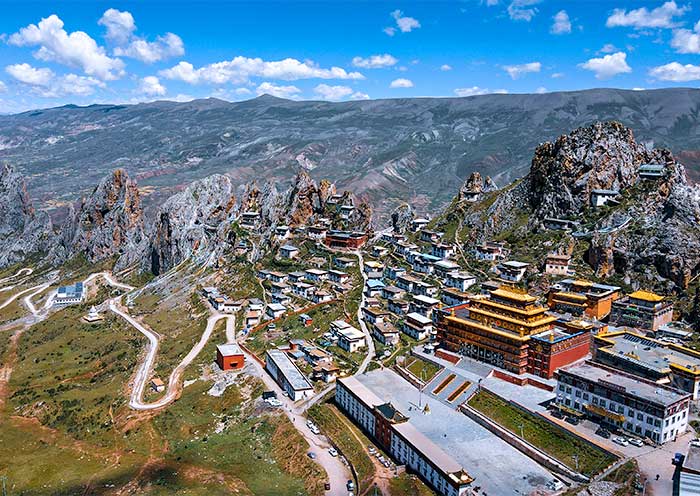
Best Time to Travel
The best time to travel along the northern route of the Sichuan Tibet Highway is during the summer months from June to August. As the northern route has higher elevations compared to the southern route, the rainy season from June to August makes the air more humid and comfortable for travelers, reducing the likelihood of altitude sickness. Although there is more rainfall during the summer, it mostly occurs at night and does not significantly impact daytime travel and sightseeing. The roads along the northern route are fully paved, so the rain does not have a major impact on transportation. However, it is important to take precautions against sun exposure as the ultraviolet (UV) radiation is intense on the Qinghai-Tibet Plateau.
Recommended Travel Length & Itinerary
Sichuan Tibet Highway Northern route via G317 typically includes passing through Wenchuan County, Li County, and the capital of Aba Tibetan and Qiang Autonomous Prefecture, Barkam (马尔康市). However, the route that goes through Wolong, Mount Siguniang, and Danba is more popular among tourists. After leaving Danba, there are two options:
Option 1: Continue heading west towards Daofu County and Luhuo County, then depart Sichuan and enter the Chamdo region of Tibet in Dege County.
Option 2: Head south from Danba and take the southern route of the Sichuan Tibet Highway, starting from the town of Xinduqiao, and enter Tibet at Markam. From there, travel north to reach Chamdo after passing through Lhasa.
Regardless of the chosen route, this journey typically takes 8-11 days to complete.
Itineraries for Option 2
Day 1: Depart from Chengdu, visit Wolong Panda Base in the morning, then stay overnight in the town of Mount Siguniang.
Day 2: Explore Mount Siguniang for a day, with options to visit either Shuangqiao Valley or Changping Valley.
Day 3: Travel to Danba Tibetan Village and spend a day exploring one of the Tibetan villages, with the Zhonglu Tibetan Village being a recommended choice.
Day 4: From Danba, head to Xinduqiao, stopping along the way to visit the Moshi Stone Park, Tagong Grassland, and Xinduqiao.
Day 5: Xinduqiao to Litang. Pay a visit to Letong Ancient and Litang Monastery after arriving.
Day 6: Litang to Batang via the famous Batang Grasslands, then continue to Mangkang.
Day 7: Mangkang to Chamdo.
Day 8-11: Journey from Chamdo to Dingqing, Baqing, Nagqu, Namtso Lake, and finally reach Lhasa, the holy city.
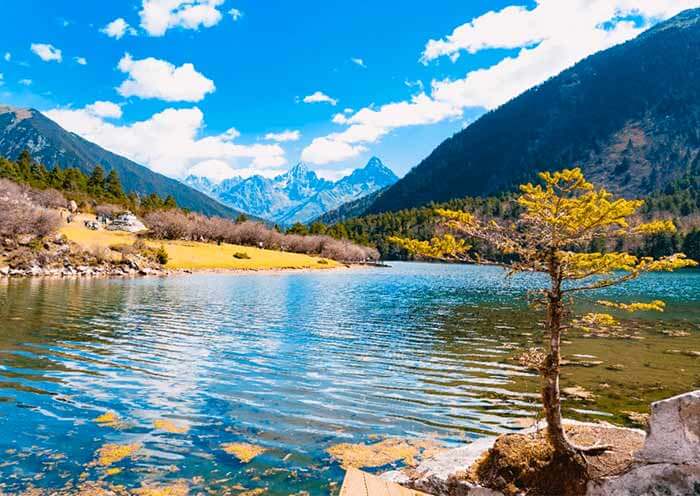

Accommodation Options Along G317
Along the G317, there are several counties, towns, and cities that offer standard accommodation options for foreign visitors. These places are:
- Siguniangshan Town: Located in Aba Tibetan and Qiang Autonomous Prefecture, Sichuan Province, Siguniangshan Town is known for its stunning natural landscapes. It offers a range of hotels and guesthouses to accommodate visitors.
- Danba County: Situated in Garze Tibetan Autonomous Prefecture, Sichuan Province, Danba County is famous for its picturesque Tibetan villages and ancient fortresses. There are hotels and guesthouses available in the county for tourists.
- Xinduqiao Town: Located in Kangding County, Ganzi Tibetan Autonomous Prefecture, Sichuan Province, Xinduqiao Town is renowned for its scenic beauty and is often referred to as the "Photographer's Paradise." The town offers various accommodation options, including hotels and guesthouses.
- Litang County: Found in Garze Tibetan Autonomous Prefecture, Sichuan Province, Litang County is known for its high-altitude grasslands and Tibetan culture. It provides accommodation choices such as hotels and guesthouses.
- Markam County: Situated in Chamdo Prefecture, Tibet Autonomous Region, Markam County offers accommodations for travelers exploring the G317 route. It is advisable to check for available hotels or guesthouses in the area.
- Chamdo City: Chamdo City is a significant urban center along the G317 route. It provides various accommodation options, including hotels, guesthouses, and hostels, to cater to the needs of tourists.
- Dingqing County: Dingqing County, located in Chamdo City, is another place where visitors can find standard accommodation options.
- Baqing County: Found in Nagqu Prefecture, Tibet Autonomous Region, Baqing County offers accommodation choices for travelers passing through the G317 route. It is advisable to inquire about available hotels or guesthouses in the area.
- Nagqu City: Situated in Nagqu Prefecture, Tibet Autonomous Region, Nagqu City is an important stop along the G317 route. It provides various accommodation options, such as hotels and guesthouses, to cater to the needs of travelers.
When planning your journey along the G317, it is recommended to research and make reservations in advance to ensure availability and a comfortable stay in these areas.
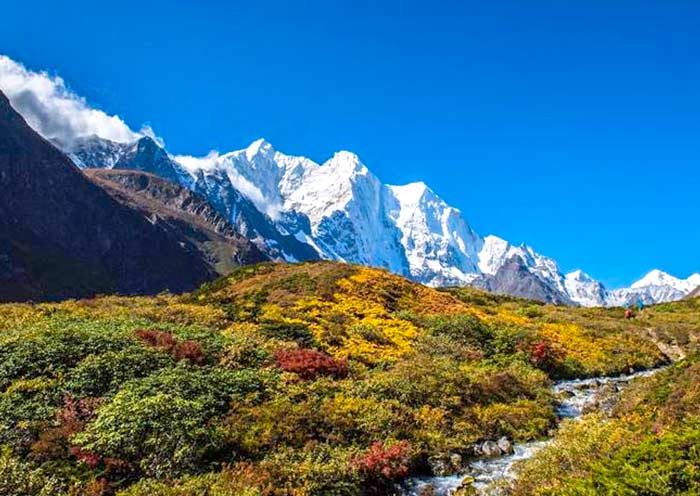
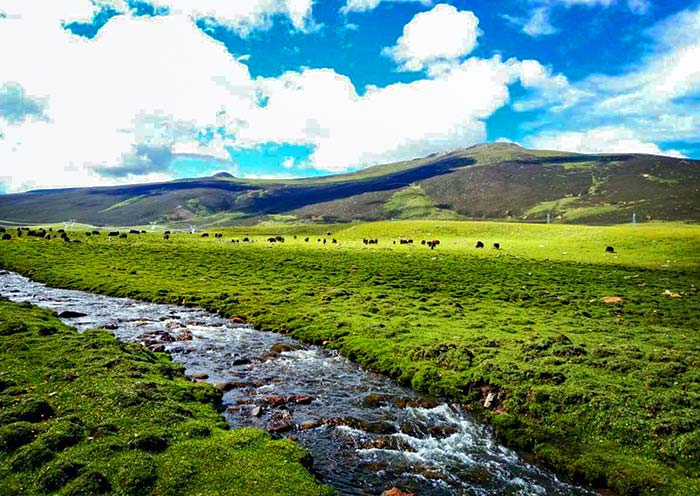
How to Choose, Southern Route or Northern Route?
When choosing between the Southern Route (G318) and the Northern Route (G317), consider the following factors:
- Preference for Natural vs. Cultural Landscapes: If you have a stronger inclination towards natural landscapes, opt for G318. For those interested in cultural landscapes, G317 is a better choice.
- Altitude Sickness Concerns: If altitude sickness is a concern, G318 is recommended. While some sections of the route exceed 4,500 meters, the altitude fluctuates along the way, and you can choose accommodation in relatively lower altitude areas to acclimatize gradually.
- Seasonal Considerations: In summer, choose G317, while G318 is preferable in autumn. Both routes are viable in spring, although icy and snowy sections may still be present. Winter is not recommended for road travel, especially in high-altitude areas.
- Traveling with Elderly or Young Family Members: If you have elderly or young family members, G318 is advisable. The towns along this route are more developed, offering better facilities for daily life and medical care if needed.
- Distance: The southern route is shorter than the northern route, especially if you exclude side trips to places like Daocheng Yading. This can result in a shorter overall itinerary.
- Adventure and Exploration: If you are an adventure enthusiast who enjoys exploration and prefers a more primitive experience, the northern route (G317) is suitable. It has fewer travelers and, although underdeveloped, offers a sense of untouched wilderness and adventure.
Combine 2 Routes of Sichuan Tibet Highway
In practical itinerary planning, we recommend combining the Southern and Northern routes of the Sichuan Tibet Highway, and even incorporating the Yunnan-Tibet Highway. This way, you can experience the highlights of Sichuan, Yunnan, and Tibet in one trip.
The main junctions of this combined route are Xinduqiao, Litang, and Mangkang. Here's the organized information in a clear and concise manner using a table format:
| Route Segment | Main Stops and Highlights |
|---|---|
| Chengdu to Xinduqiao | Southern Route: Chengdu - Kangding - Xinduqiao |
| Northern Route: Chengdu - Wolong - Siguniangshan - Danba - Xinduqiao | |
| Xinduqiao to Litang | Scenic drive on G318 with high-altitude passes |
| Litang to Mangkang | Southern Route: Litang - Daocheng Yading - Deqin - Mangkang |
| Northern Route: Litang - Chamdo - Nagqu - Mangkang | |
| Mangkang to Lhasa | Southern Route: Mangkang - Zogang - Basu - Lharze - Bomi - Nyingchi - Lhasa |
| Northern Route: Mangkang - Chaya - Chamdo - Leiwuqi - Dingqing - Baqing - Nagqu - Lhasa |
Recommend Route in Details
Our recommended combination for the Sichuan Tibet Highway is to travel from Chengdu to Litang via the Southern Route for a faster journey. Then, from Litang, head towards Daocheng Yading and take the Yunnan-Tibet Highway back to Mangkang. From Mangkang, travel north to Chamdo, enjoying the rarely visited eastern part of Tibet that 90% of tourists have not explored. Continue south to Nagqu and then proceed to Lhasa.
Useful Tips for Sichuan Tibet Highway Overland Tour
If you're planning an overland tour along the Sichuan Tibet Highway (G318), here are some useful tips to enhance your experience and ensure a smooth journey:
- Acclimatize to the high altitude: The Sichuan Tibet Highway reaches elevations above 4,000 meters, so it's crucial to acclimatize gradually. Spend a few days in low-altitude areas like Chengdu or Kangding before ascending further. Stay hydrated, avoid strenuous activities initially, and pay attention to any signs of altitude sickness.
- Obtain necessary permits: Before embarking on the journey, make sure you have the required permits, including the Tibet Travel Permit. This permit is essential for traveling within Tibet Autonomous Region. Consult with a reputable travel agency to assist you in obtaining the permits.
- Pack appropriately: Due to the varying climates and altitudes along the route, pack clothing suitable for different conditions. Bring warm layers, waterproof gear, sturdy footwear, and sun protection (hat, sunglasses, sunscreen). It is also advisable to pack some basic medication, including altitude sickness remedies.
- Plan for accommodation and supplies: The Sichuan Tibet Highway passes through remote areas with limited facilities. Plan your accommodation in advance, especially in smaller towns or scenic areas. Stock up on essential supplies, such as food, water, and fuel, as options may be scarce in certain sections of the route.
- Be prepared for road conditions: The Sichuan Tibet Highway is a mountainous route with winding roads and varying road conditions. Some sections may be under construction or affected by weather conditions. Drive carefully, be prepared for delays, and keep an eye on weather updates. Consider hiring a local driver who is familiar with the route.
- Respect local customs and traditions: Along the journey, you will encounter diverse ethnic communities, especially in Tibetan regions. Respect their customs, traditions, and religious sites. Dress modestly when visiting monasteries or sacred places and seek permission before taking photographs of locals.
Remember, road conditions and travel regulations can change, so it's essential to stay updated and flexible with your plans. Consider consulting with experienced travel agencies or local authorities for the most up-to-date information before embarking on your Sichuan Tibet Highway overland tour.
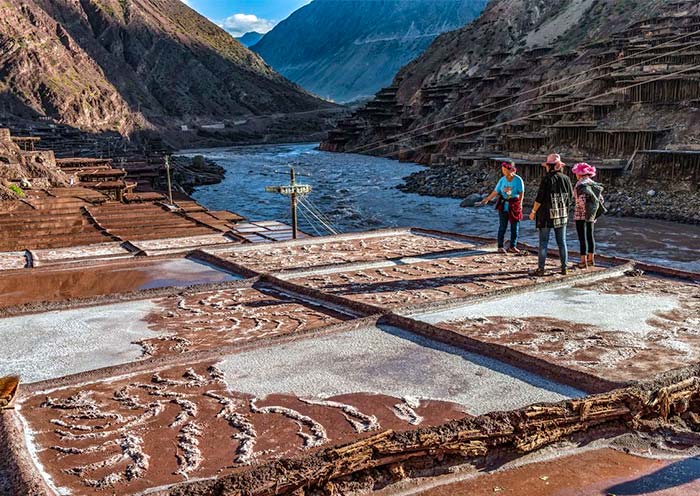
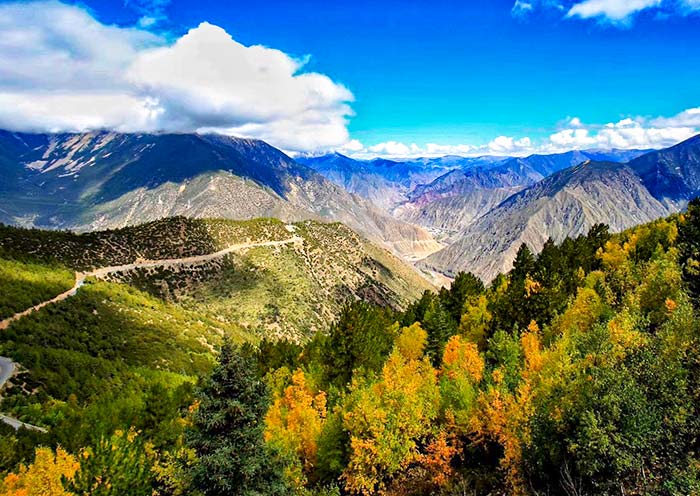
Explore Sichuan Tibet Highway with AOT
Embark on a captivating adventure along the Sichuan Tibet Highway with AOT (Asia Odyssey Travel). Are you ready to explore the stunning landscapes and cultural treasures that await you? The Sichuan Tibet Highway is a legendary route that winds through the picturesque mountains and valleys, offering breathtaking views and encounters with the rich Tibetan culture.
With our extensive knowledge and expertise in the Sichuan Tibet Highway, Asia Odyssey Travel offers a variety of carefully crafted tour packages to suit every traveler's preferences.
Highlights along the Route: Kangding, Tagong Grassland, Litang, Danba, and Daocheng Yading
Tour Packages: Sichuan Tibet Highway Tours, Chengdu to Lhasa Overland Tours, Cultural Exploration of Tibetan Regions
Tailored Experiences: We understand that each traveler has unique interests, so we provide personalized tours that cater to your preferences. Our experienced guides will accompany you, sharing fascinating insights and stories along the way, ensuring a seamless and enriching travel experience.
Logistics Made Easy: From transportation arrangements to accommodations, we take care of all the logistics, ensuring a smooth and comfortable journey along the Sichuan Tibet Highway.
24/7 Assistance: Our dedicated team is available round-the-clock to provide support and address any inquiries or concerns you may have during your trip.
Prepare to be captivated by the awe-inspiring landscapes and immerse yourself in the vibrant Tibetan culture along the Sichuan Tibet Highway. Let AOT be your trusted companion as we unveil the wonders of this iconic route, creating memories that will last a lifetime. Join us on this extraordinary journey and let the magic of the Sichuan Tibet Highway unfold before your eyes.
